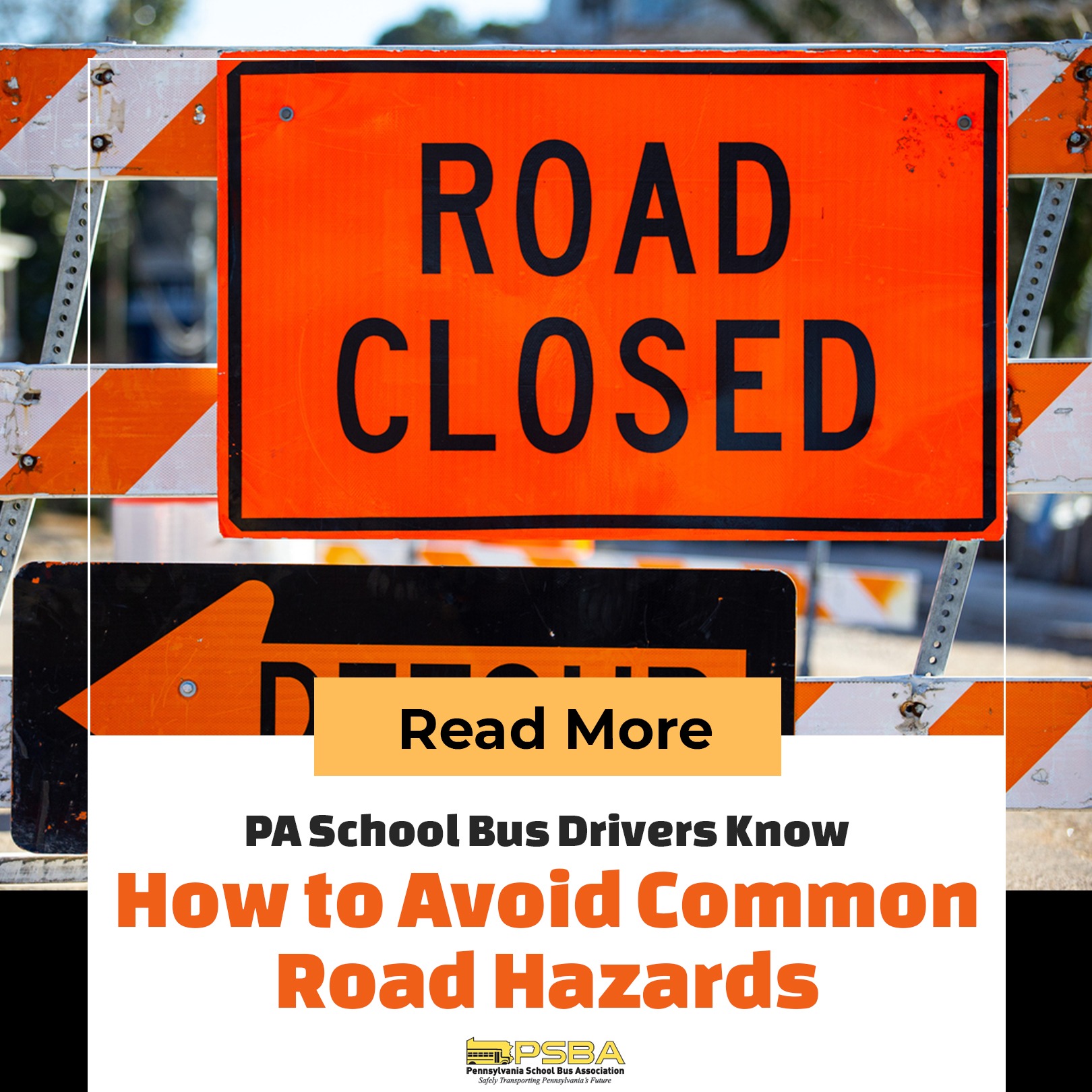PA school bus drivers work hard every day to ensure that the students on board get to school and back home safely. Driving in any city or community presents challenges to every school bus driver.
The fact that there are numerous road hazards in driving – and that they’re still on the rise – is something that bus drivers should be vigil about each day.
Safety starts behind the wheel.
Pennsylvania, like the rest of the states in the US, requires candidates to possess a commercial driver’s license (CDL), a clean driving record, and a clear drug screening.
However, it’s also essential to hire a driver based on other qualifiers – beyond how the applicant reads on paper. Discuss the importance of defensive (but careful) driving and evaluate the driver’s personality. Drivers who are friendly and communicative and display strong people skills are more likely to earn the students’ attention, trust, and respect. These qualities will help the driver maintain safety standards inside the bus.
Encourage drivers to take care of their health and safety before, during, and after work:
- Eat healthily.
- Get plenty of rest.
- Avoid smoking and alcohol.
- Stay at home when sick.
Drivers should be aware of the risks associated with sleep deprivation or the effect of alcohol and how it can influence their ability to drive. Thus, they should never get behind the wheel if they’re sleepy or have been drinking. Their focus should be on the road, and anything distracting can cause the drivers to lose that focus.
Road hazards and how school bus drivers should avoid them
School bus drivers must follow the suggestions below to avoid road accidents and ensure safe driving and transportation of students to and from school:
- Specific fixed hazards – The school bus driver must find out about the fixed hazards on their routes, such as railroad crossings, tunnels, overpasses, dangerous roadways and intersections, and steep downhills.
- Hydroplaning or skidding out of control – These hazards happen when driving on rain, ice, or snow, which causes the roads to become slippery. It also occurs when stopping suddenly or entering a turn at high speed. To prevent skidding, the driver needs the adjust their driving, especially if the road conditions are less than ideal. Also, they shouldn’t try to jerk the wheel as it may cause them to lose control of the vehicle quickly. It’s also good to maintain the tires in good condition, so the driver should do routine checks on the bus, including the tires, before getting the vehicle on the road.
- Bad weather – The driver should slow down if the weather suddenly turns bad. Driving in dense fog is not permissible and thus should be avoided. But if the driver encounters unexpected fog while driving, they must reduce the vehicle’s speed, open the windows to know the traffic outside, and avoid switching lanes unless necessary. Also, they should never stop on a busy road in a dense fog; otherwise, it will put them at risk of being hit.
- Other vehicles – Drivers should drive defensively by staying fully alert and focused on the road.
- Other sudden hazards – The driver should be prepared for any sudden hazards like blinding sunlight, storms, fallen trees, flooded roads, downed power lines, traffic accidents, etc. Depending on the situation, the driver should slow down or stop driving altogether and call for help.
If you plan to take on a career of driving a school bus, you should know what risks to expect and how to avoid them. It is one of the traits of responsible PA school bus drivers. You can learn about possible interview questions so you can prepare. For new career opportunities, check out https://schoolbushero.com/jobs.

